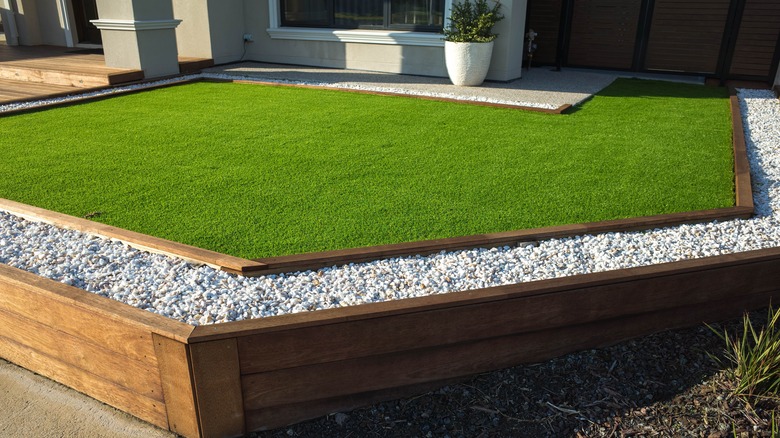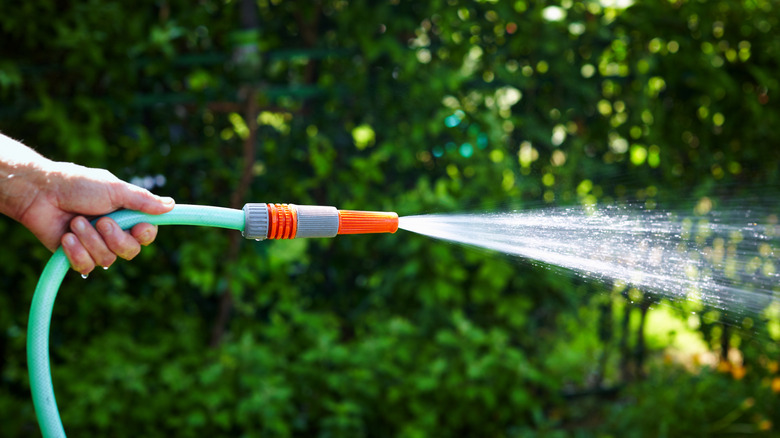The Simple Watering Trick That Gets Rid Of Pests In Artificial Grass
Artificial turf is a popular way to have a lush, green lawn year round. Unlike they do with natural grass, pests like flies, fleas, and other insects don't typically congregate on your artificial lawn, as the habitat doesn't offer adequate food and shelter. Natural grass offers soil for burrowing, but artificial turf lacks soil, so pests often avoid fake grass lawns in favor of the real thing. Occasionally, you may see a pest, but there's a simple trick you can do to get rid of them. Artificial grass company ReTurf says periodic rinsing can help avoid pest activity. Just grab your garden hose, and rinse the turf lawn regularly to wash away any insects present in your yard.
Rinsing your lawn will wash away bothersome bugs and fleas in a snap, along with accumulated bacteria. This easy move will also make the area less hospitable for future insect visitors. One of the reasons why many love artificial turf is that it drains faster than natural grass, so you don't have to worry about standing puddles on your lawn. Once you've got into a routine of rinsing your turf of any insects and bacterial buildup, you can mitigate the risk of attracting insects with these manageable steps.
How to make your artificial grass unwelcoming to insects
When pests decide to make your turf their new home, there's often a reason for the attraction. Keeping your artificial lawn looking fresh as its installation day requires regular maintenance, such as debris removal and spot cleaning as needed. Leaves, twigs, and other natural matter left in your yard will decompose, enticing hungry pests looking for food and shelter. Rake your lawn lightly at least once a month, and pick up debris to remove the chances of inadvertently creating a bug B&B.
Debris isn't the only attraction for pests in an artificial lawn. Pet and food waste can also attract insects, such as flies. They may lay their eggs as they feed on decaying matter, becoming a general nuisance around your home, especially if they wander into your yard. A fake grass lawn with inadequate drainage may also collect water, encouraging mosquitoes, plus the growth of mold and bacteria. If you spot standing water on your lawn, consider contacting an artificial lawn installer to check on the turf's drainage and ensure you don't create the neighborhood's newest hot new bug residence.

